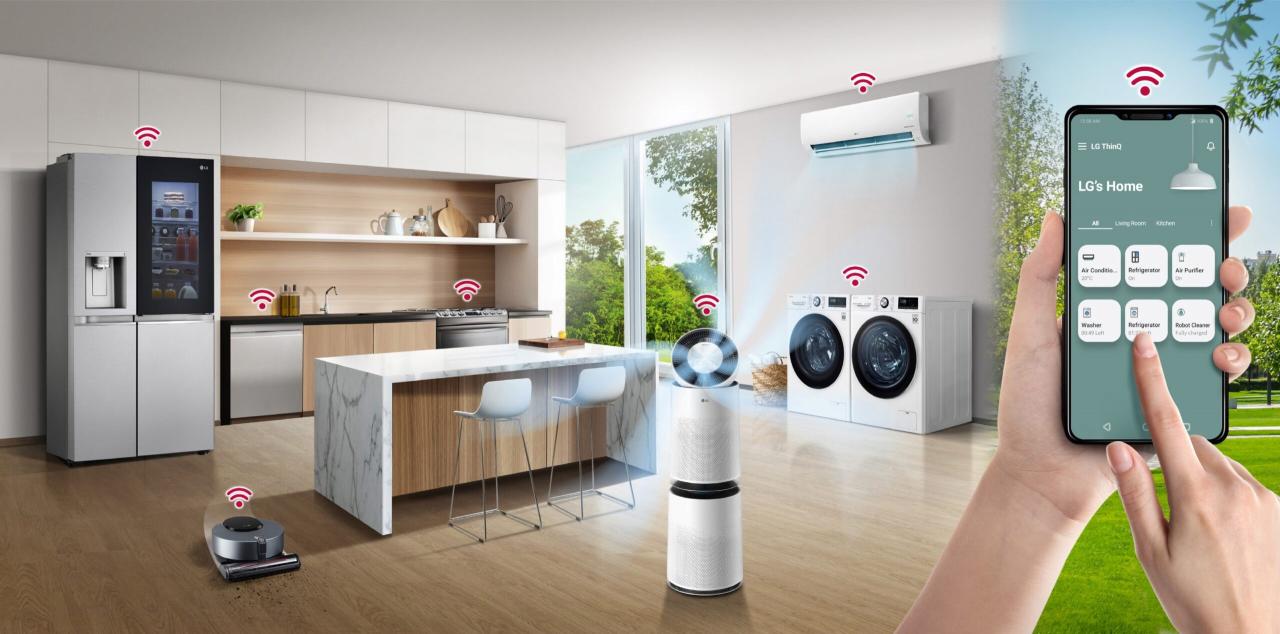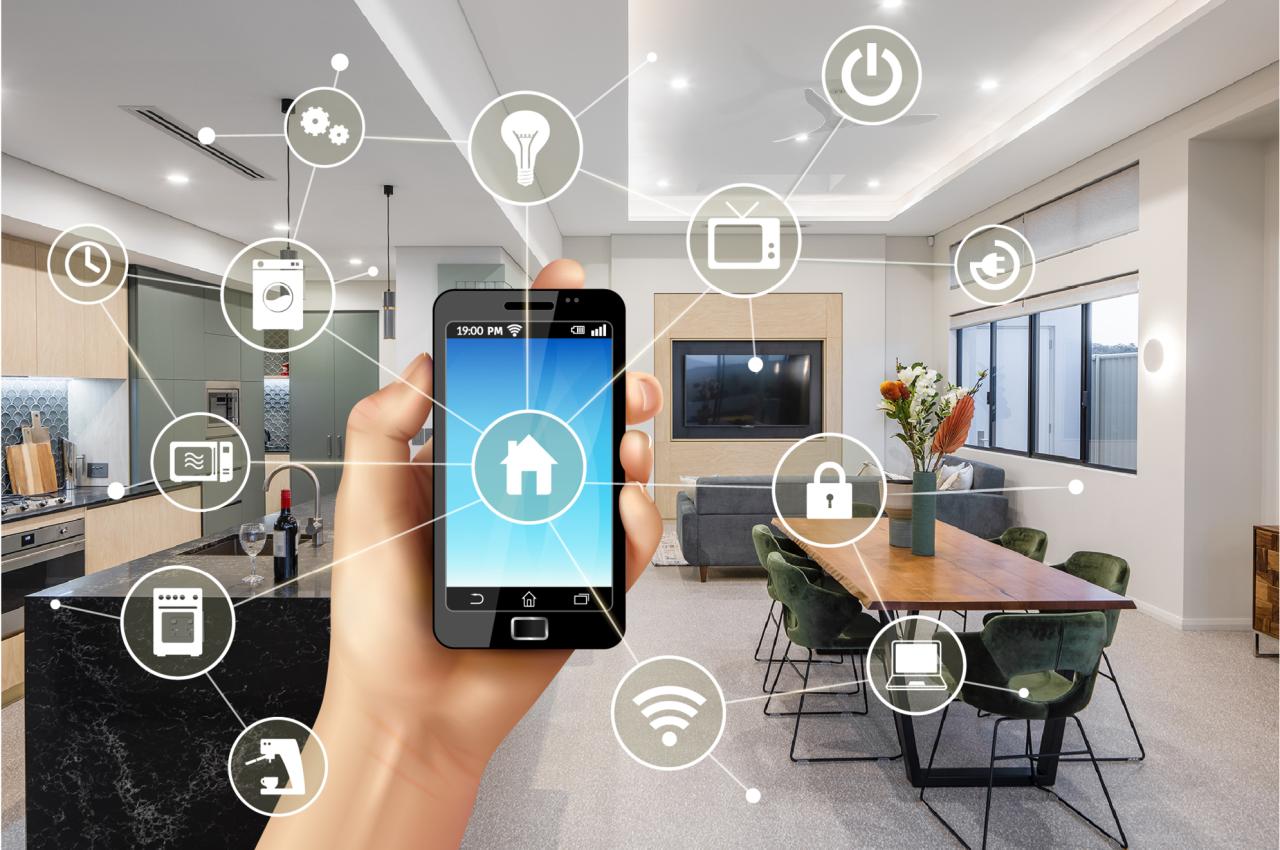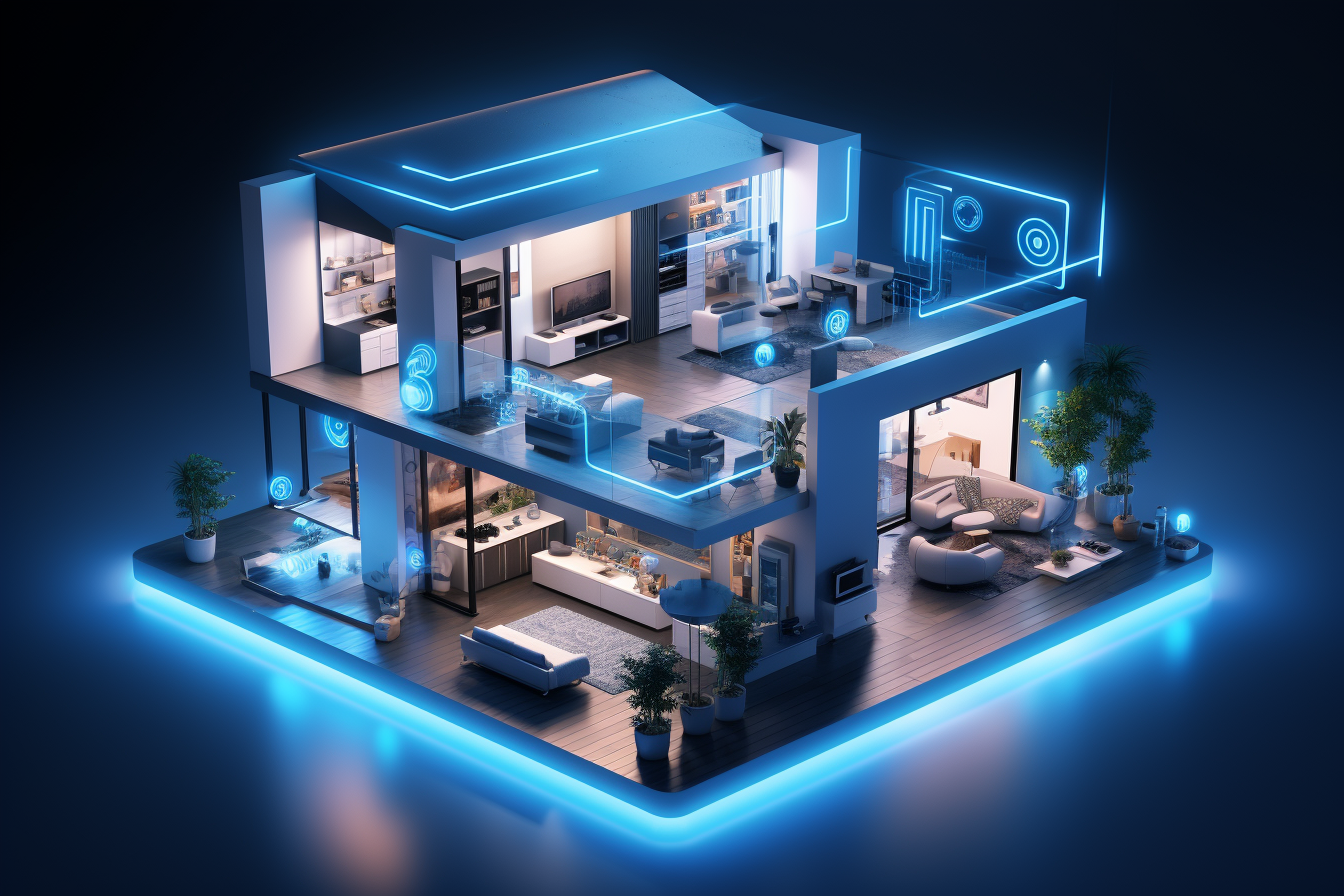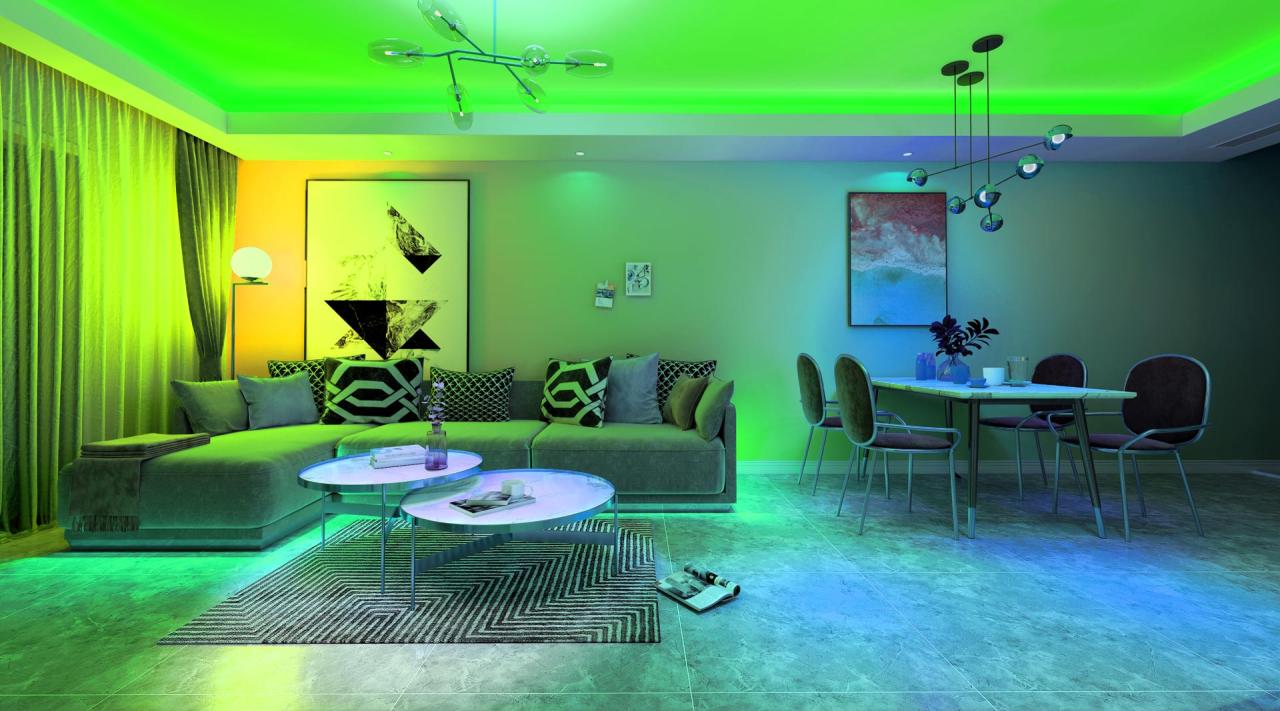Smart climate control systems bring a new level of innovation to managing indoor temperatures, offering a blend of technology and convenience that is reshaping the way we interact with our living spaces.
This advanced system not only ensures optimal comfort but also prioritizes energy efficiency and environmental sustainability.
Definition of Smart Climate Control Systems
Smart climate control systems are advanced technologies designed to regulate and monitor indoor climate conditions in homes or buildings. Unlike traditional systems, smart climate control systems utilize sensors, Wi-Fi connectivity, and intelligent algorithms to optimize energy efficiency and provide personalized comfort.
Key Features of Smart Climate Control Systems
- Remote Access: Users can control the temperature and settings of their climate control system from anywhere using a smartphone or computer.
- Energy Efficiency: Smart climate control systems can learn user habits and adjust settings automatically to conserve energy without compromising comfort.
- Zoning Capabilities: These systems can divide a building into zones and adjust temperature settings independently for each area, optimizing comfort and energy usage.
- Data Analysis: Smart climate control systems collect data on usage patterns and environmental conditions to provide insights for further optimization.
Benefits of Using Smart Climate Control Systems
- Cost Savings: By optimizing energy usage, smart climate control systems can lead to reduced utility bills over time.
- Improved Comfort: Personalized settings and zoning capabilities ensure that occupants can enjoy a comfortable environment tailored to their preferences.
- Convenience: Remote access and automation features make it easy to manage the climate control system without manual adjustments.
- Eco-Friendly: By reducing energy consumption and emissions, smart climate control systems contribute to a more sustainable living or working environment.
Components of Smart Climate Control Systems
Smart climate control systems consist of various components that work together seamlessly to regulate indoor climate, providing comfort and energy efficiency. The main components include sensors, thermostats, actuators, and controllers.
Sensors
Sensors are devices that detect changes in temperature, humidity, light, and other environmental factors. They provide real-time data to the system, allowing it to make adjustments based on the conditions inside and outside the building.
Thermostats, Smart climate control systems
Thermostats are the brains of the system, controlling the heating, cooling, and ventilation settings based on the data received from the sensors. They can be programmed to maintain specific temperature ranges throughout the day, optimizing comfort and energy savings.
Actuators
Actuators are responsible for carrying out the commands from the thermostat, such as adjusting the HVAC system, opening or closing vents, or turning on/off fans. They physically act on the environment to achieve the desired indoor climate conditions.
Controllers
Controllers are the central hub that connects all the components of the system, allowing them to communicate and work together effectively. They ensure that the sensors, thermostats, and actuators are synchronized to achieve optimal comfort and efficiency.
Popular brands or models of smart climate control systems in the market include Nest, Ecobee, Honeywell, and Tado. These systems offer advanced features such as remote access, learning capabilities, and integration with smart home platforms, making them convenient and user-friendly options for controlling indoor climate.
Energy Efficiency and Cost Savings

Smart climate control systems are designed to optimize energy usage, leading to increased energy efficiency. By utilizing sensors and advanced algorithms, these systems can adjust temperature settings based on occupancy, time of day, and even weather conditions. This proactive approach helps reduce energy waste and ensures that heating and cooling systems operate only when needed.
Energy Efficiency
Smart climate control systems can significantly reduce energy consumption compared to traditional systems. By constantly monitoring and adjusting settings, these systems can avoid unnecessary heating or cooling, leading to lower energy bills and reduced environmental impact. Studies have shown that smart thermostats alone can save homeowners up to 23% on heating and cooling costs.
Cost Savings
The potential cost savings associated with using smart climate control systems are substantial. Not only do these systems help reduce energy bills by optimizing usage, but they also extend the lifespan of HVAC equipment by preventing unnecessary wear and tear. Additionally, some utility companies offer rebates or incentives for installing smart climate control systems, further enhancing the cost-effectiveness of these solutions.
Comparison of Energy Consumption
When comparing energy consumption between traditional and smart climate control systems, the difference is evident. Traditional systems often operate on a fixed schedule or manual adjustments, leading to energy waste when spaces are unoccupied or when temperatures are set too high or too low. In contrast, smart climate control systems adapt in real-time to ensure efficient energy usage, resulting in lower overall consumption and cost savings.
Integration with Smart Home Technology: Smart Climate Control Systems
Smart climate control systems can be seamlessly integrated with other smart home devices, creating a connected ecosystem that enhances convenience, comfort, and energy efficiency in the home. By leveraging the power of automation and interconnectivity, users can enjoy a truly smart and responsive living environment.
Automation Features
- Integration with smart thermostats allows for temperature adjustments based on occupancy sensors, time of day, or even weather conditions, ensuring optimal comfort while saving energy.
- Linking with smart lighting systems enables coordinated actions, such as adjusting lighting levels based on natural light or time of day to create the perfect ambiance.
- Connecting with smart blinds or curtains can work in tandem with the climate control system to regulate sunlight and heat entering the room, maximizing energy efficiency.
- Integrating with voice assistants like Amazon Alexa or Google Assistant allows for hands-free control of the climate settings, providing a seamless and effortless user experience.
Advantages of a Connected Smart Home Ecosystem
- Increased convenience and comfort for users, as they can control multiple aspects of their home environment through a single interface or voice command.
- Enhanced energy efficiency and cost savings by optimizing the use of heating, cooling, lighting, and other systems based on real-time data and user preferences.
- Improved indoor air quality through coordinated ventilation and filtration systems, ensuring a healthy and comfortable living space for occupants.
- Enhanced security and safety features, such as integrating climate control with smart locks and security cameras to monitor and protect the home effectively.
Remote Access and Control
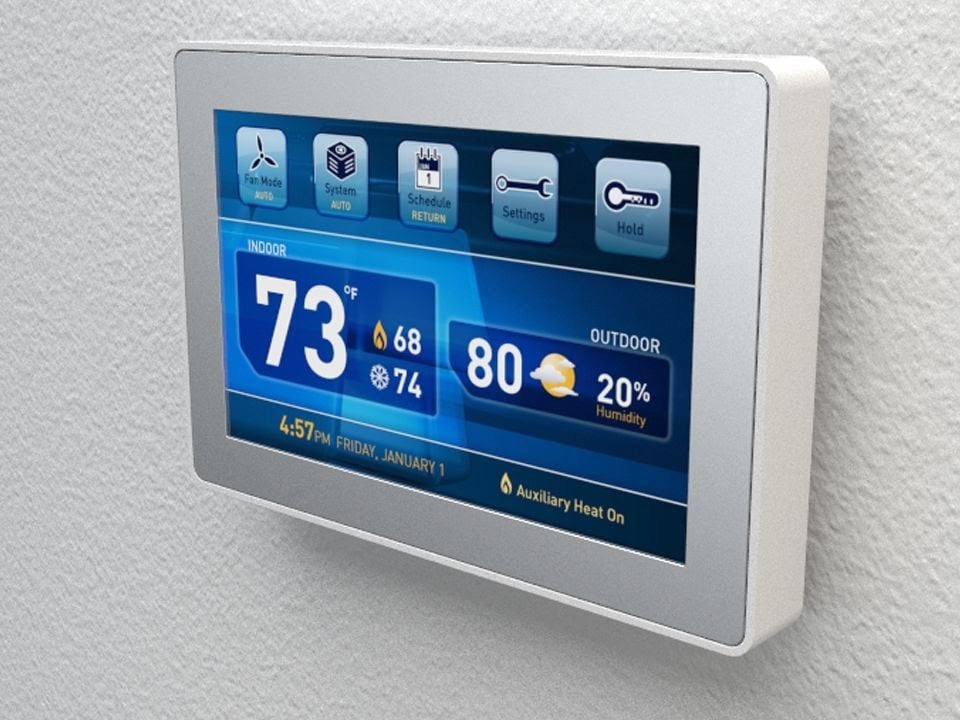
Remote access and control capabilities are key features of smart climate control systems, allowing users to manage their home’s temperature settings from anywhere in the world.
Convenience and Flexibility
- Users can adjust the temperature, set schedules, and monitor energy usage remotely through a smartphone app or web interface.
- This flexibility enables users to ensure their home is comfortable upon arrival, whether returning from work, vacation, or any other situation.
- Remote access also allows for quick adjustments in case of unexpected weather changes or events that may impact indoor comfort.
Benefits of Remote Access
- Remote access to smart climate control systems can lead to significant energy savings by optimizing heating and cooling based on actual usage patterns.
- Users can avoid wasting energy by turning off the system when not needed or adjusting settings remotely when plans change.
- In situations where users forget to adjust the thermostat before leaving home, remote access provides a convenient solution to prevent unnecessary energy consumption.
Environmental Impact
Smart climate control systems have a significant positive impact on the environment by reducing energy consumption and promoting sustainability. These systems play a crucial role in minimizing carbon emissions and helping combat climate change.
Reduction in Energy Consumption
Smart climate control systems are designed to optimize energy usage by adjusting temperature settings based on occupancy and external weather conditions. By efficiently managing heating, ventilation, and air conditioning (HVAC) systems, these smart technologies help minimize energy waste and reduce overall energy consumption.
- Smart thermostats can automatically adjust temperature settings when the house is empty, leading to energy savings.
- Zoned heating and cooling systems ensure that only occupied areas are conditioned, reducing energy usage in unoccupied spaces.
- Integration with sensors and weather forecasts allows the system to make real-time adjustments for maximum efficiency.
Promotion of Sustainability
The use of smart climate control systems contributes to promoting sustainability by decreasing the reliance on fossil fuels and lowering greenhouse gas emissions. By adopting these innovative technologies, individuals and businesses can actively participate in the global effort to reduce their environmental impact.
- Smart systems encourage the use of renewable energy sources such as solar power to further reduce carbon footprint.
- By enhancing energy efficiency, smart climate control systems help conserve natural resources and minimize environmental degradation.
- Studies have shown that the widespread adoption of smart technologies can lead to a substantial decrease in overall energy consumption and greenhouse gas emissions.
Quick FAQs
How do smart climate control systems differ from traditional systems?
Smart systems use advanced technology and sensors to regulate indoor climate more efficiently compared to traditional systems.
Can smart climate control systems really save on energy costs?
Yes, these systems optimize energy usage, leading to potential cost savings in the long run.
Is it difficult to integrate smart climate control systems with other smart home devices?
No, many systems are designed to seamlessly integrate with various smart home technologies for enhanced automation.





